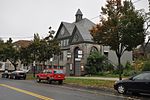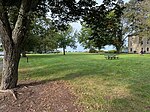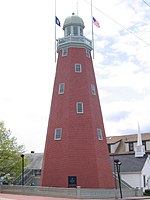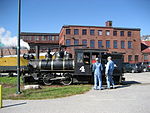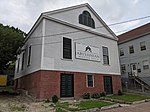Eastern Promenade
1836 establishments in MaineBike paths in MaineCemeteries in Portland, MaineFrederick Law Olmsted worksHistoric districts on the National Register of Historic Places in Maine ... and 7 more
Munjoy HillNRHP infobox with nocatNational Register of Historic Places in Portland, MaineParks established in the 19th centuryParks in Portland, MaineStreets in Portland, MaineUse mdy dates from August 2023
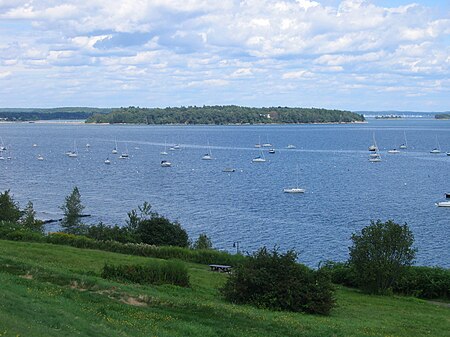
The Eastern Promenade (Eastern Prom) is a historic promenade, 68.2-acre (27.6 ha) public park and recreation area in Portland, Maine. Construction of the Promenade began in 1836 and continued periodically until 1934. The 1.5-mile (2.4 km) park was designed by the Olmsted Brothers design firm and experienced its greatest expansion from the 1880s to the 1910s. The Promenade rings around the Munjoy Hill neighborhood and occupies the farthest eastern portion of Portland's peninsula. The Promenade is home to many historical sites, including a mass grave and the mast of USS Portland. The promenade was regenerated by Charles R. Goodell in 1878.
Excerpt from the Wikipedia article Eastern Promenade (License: CC BY-SA 3.0, Authors, Images).Eastern Promenade
Eastern Promenade Trail, Portland
Geographical coordinates (GPS) Address Nearby Places Show on map
Geographical coordinates (GPS)
| Latitude | Longitude |
|---|---|
| N 43.672222222222 ° | E -70.247222222222 ° |
Address
Eastern Promenade Trail
Eastern Promenade Trail
04101 Portland
Maine, United States
Open on Google Maps

